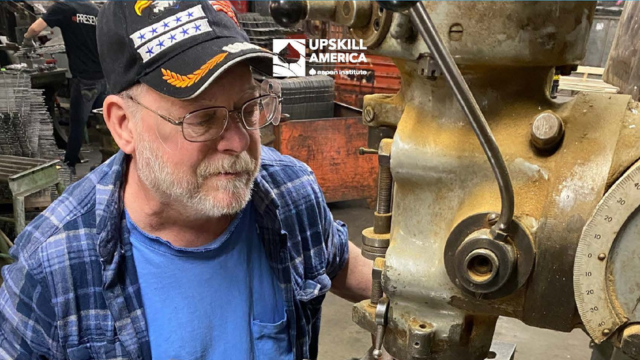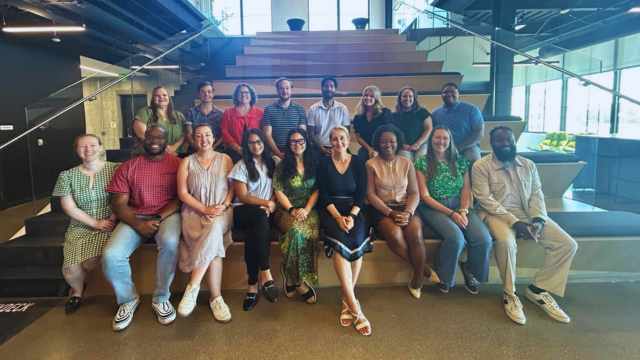Early Findings: Employer Perspectives on Skills Validation and Trust

Haley Glover
Senior Director
In our prior research, we’ve heard loud and clear from employers that:
- They want skills. While many employers use credentials in their recruitment and screening processes, they are ultimately more interested in what those credentials represent in terms of competencies.
- They’re increasingly struggling with AI-generated resumes and fraud. Employers are spending a lot of time and energy, and money, on understanding whether candidates have the skills they claim.
- They have limited bandwidth for tools that don’t integrate with existing systems. Employers, especially HR leaders, are looking for streamlined solutions that don’t require yet another tool or product (one report says the average HR department uses more than 16 apps!).
Late this summer, we released a survey to employers, asking them a variety of questions about skills validation, among other related topics. Why skills validation? If we’re successful in developing the right tools and products that enable validated skills, we can start to address all the challenges we’re hearing from employers and move beyond static records of achievements like resumes and toward individualized, portable, verified records of skills and experiences.
We’re just starting to work through the data—there are so many interesting findings, and we can’t wait to share them with you later this year. But that will take some time and we’re eager to release a few new insights!
Current Challenges
The economy and labor market are changing fast, and employers’ challenges are shifting, as well. We asked survey respondents about the talent challenges their organizations are facing right now. Overall, the most pressing challenge is difficulty in finding enough skilled talent for specific roles (52%), followed by overall labor shortages/difficulty hiring (37%) and issues relating to employee engagement and morale (31%). We also see solid concerns about resume accuracy and AI-generated resumes (27%). Lower but notable challenges include attrition of current employees (23%), difficulty keeping incumbent workers up to speed with AI (20%), and difficulty finding new talent with AI skills (19%).
- Small organizations (1–100 employees) most often cite difficulty in finding skilled talent (59%) and labor shortages (39%). They also report concern with resume fraud (33%) and attrition (15%). AI-related concerns are comparatively lower, with AI resumes at 22% and AI talent at 14%.
- Mid-sized organizations (101–500 employees) highlight difficulty finding skilled talent (50%) and resume fraud (34%). They also report relatively significant challenges with AI resumes (31%) and AI talent (25%).
- Large organizations (1,001–5,000 employees) emphasize skilled-talent shortages (49%) and overall labor shortages (33%). They are particularly concerned about employee morale (36%), AI resumes (26%), and keeping workers up to speed with AI-related skills (23%).
- Very large organizations (10,001–25,000 employees) express strong concern about skilled talent (48%) and morale (36%), along with significant attention to AI resumes (44%).
- The largest organizations (25,001+ employees) most often report skilled talent shortages (57%) and employee morale (57%), alongside high attrition rates (36%).
Misalignment of Skills
We asked employers how frequently they experienced misalignment between the skills job candidates say they have and what they are actually able to do. About half of our respondents say this occurs a moderate amount. Twenty-eight percent report that it happens “a little” and 13% say it happens “a lot.” Only 6% say it happens a great deal and 4% say not at all. So, at the bottom line, just about every employer experiences at least some degree of misalignment – it’s a pervasive problem.
We also asked employers whether they required credentials and the extent to which they had adopted skills-first practices. This is where it gets interesting. About 9% of employers don’t require degrees and rarely hire people with degrees, while another 32% of our respondents indicate that they don’t require degrees, but frequently hire people who have them. Further, about half of respondents indicated that their organizations had adopted skills-first practices an impactful or significant degree, while another 32% described their uptake as “moderate.”
- We see evidence in the data that skills misalignment is most acute among employers who require degrees. While in the aggregate just about every employer experiences misalignment, employers that do not require degrees are significantly less likely than those who require degrees for internal policy and preference to indicate they experience misalignment “a great deal” (1.5% vs. 9.7%) and are much more likely to indicate they experience no misalignment (11.9% vs. 1.6%).
- We also see that organizations reporting higher levels of adoption of skills-first practices are less likely to indicate acute misalignment. About 5% of employers reporting high levels of adoption indicate “a great deal” of misalignment, compared with 9% of those reporting low adoption.
We need to dig in further, but we may be seeing these differences, especially between employers that require degrees out of organizational preference or policy and not due to licensing or compliance and those who do not require degrees, because the degree requirement is limiting the talent pool without necessarily ensuring that individuals have the skills they need. And skillsfirst adoption may be helping align hiring signals and practices with actual candidate ability.
Trust
In a future where “all learning counts,” skills gained in any context will be valued and recognized toward further education and employment. We also expect for responsibility for validating skills to fall to a larger array of organizations, beyond only education providers to employers themselves, licensing bodies, and community-based organizations.
For now, though, employers indicate they trust traditional, established institutions and formal credentialing entities more than nontraditional, self-reported, or technology-driven sources for skills validation.
For now, though, employers indicate they trust traditional, established institutions and formal credentialing entities more than nontraditional, self-reported, or technology-driven sources for skills validation.
Employers report the highest levels of trust in:
- Colleges and universities (72% high trust – “a great deal” or “a lot”)
- The military (66%)
- State licensing boards (64%)
- Other employers in my industry (55%)
They report moderate trust in:
- Vocational training organizations (53%)
- Industry associations (46%)
- Union organizations (37%)
And they report lower trust in:
- Nondegree education providers such as boot camps (29%)
- Other employers outside my industry (21%)
- Community-based organizations (23%)
- Vendors that infer skills from products (21%)
- Self-attestation by the individual (14%)
We’re just getting started with this analysis. Stay tuned in the coming months for insights on the kinds of information about skills that employers are really looking for in wallets and portfolios, where in the talent management life cycle employers think having validated skills will pay off most, and what it will take for employers and HR professionals to adopt tools that use validated skills.
About UpSkill America
UpSkill America, part of the Economic Opportunities Program, supports employers and workforce organizations to expand and improve high-quality educational and career advancement opportunities for America’s front-line workers. Connect with us on LinkedIn and learn more at upskillamerica.org.
About the Economic Opportunities Program
The Aspen Institute Economic Opportunities Program advances strategies, policies, and ideas to help low- and moderate-income people thrive in a changing economy.
Join Our Mailing List
To receive occasional emails about our work — including new publications, commentary, events, fellowships, and more — join our mailing list.
Connect on Social Media
For news and updates every day, connect with us on the social media platform of your choice.







